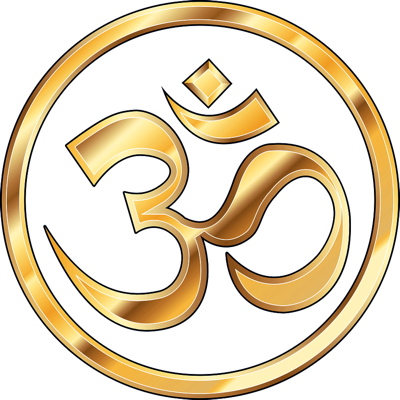
Understanding Om: Sound, Symbol, Silence, & Why We Chant it at The Yoga Sanctuary
If you’ve been to a yoga class, chances are you’ve been invited to chant Om. Whether at the beginning of class to set the intention or at the end to close the practice, chanting Om offers a way to anchor into the present moment and connect with something beyond ourselves.
Mantra and Om
Mantras are sacred sounds that can be composed of sentences, single words, or even single syllables. One of the oldest and most widely known is Om. Called the primordial seed of the universe, Om is considered the root mantra from which all other mantras emerge. The practice of mantra leads naturally to a state of meditation, and Om is often the entry point into that stillness.
The Four Aspects of Om
Om is more than a single sound—it is made up of four distinct aspects: A, U, M, and the silence that follows. Together, they represent the fullness of human experience and the cycle of creation, continuity, dissolution, and pure awareness.
- A – Creation
- The sound begins in the belly, moves through the open throat, and is voiced with the mouth wide open.
- It is the first letter of the Sanskrit alphabet.
- It represents creation—the beginning of all things.
- U – Continuity
- The sound forms in the middle of the throat, with the mouth not as open as for A.
- It represents continuity and connection—the sustaining energy that carries life forward.
- M – Dissolution
- The mouth closes, and the vibration moves into the nasal passages, where it resonates outward.
- It is the final consonant of the Sanskrit alphabet.
- It represents endings and dissolution—the return of all things back to source.
- Silence – Pure Awareness
- Moving from A through U to M encompasses all that can be expressed in letters and words.
- The silence that follows represents the witness state of pure awareness—the space that holds everything.
In this way, Om is said to embody the entire universe: birth, life, and death, as well as the timeless awareness beyond them all.
Experiencing Om in the Body
When chanted slowly, the four-part quality of Om becomes clear:
- The A begins in the throat and chest.
- The U vibrates through the middle of the mouth.
- The M hums at the lips.
- Then comes the pause of silence.
This movement from back to front, from sound into stillness, is both felt in the body and reflected in consciousness.

The Meaning of the Om Symbol (ॐ)
-
Lower curve → Waking state (A)
-
Middle curve → Dreaming state (U)
-
Upper curve → Deep sleep (M)
-
Dot → Pure awareness / the witness
-
Crescent below the dot → Maya, the veil of illusion
Together, these elements reflect all states of consciousness and the timeless awareness that holds them.
Om in Practice
Chanting Om can shift our inner state almost immediately. At the start of practice, it helps us transition from the busyness of the day into a more mindful space. At the end, it supports integration and closure, carrying a sense of peace into whatever comes next.
You might also chant Om—or even a round of Oms—outside of class whenever you feel scattered, overwhelmed, or in need of reconnection. Allow the sound to rise, fill your body, and settle into silence. In this way, Om becomes not just a chant, but a practice of returning home to your center.
A Closing Reflection
At The Yoga Sanctuary, most of our classes end with three rounds of Om—a shared vibration that unites our voices and hearts as we transition back into daily life. Once a year, on the International Day of Peace, we come together to chant Om 108 times, creating a ripple of peace that extends far beyond our walls. Whether chanted once, three times, or 108 times, Om invites us into stillness, connection, and the remembrance that we are part of something vast and timeless.
